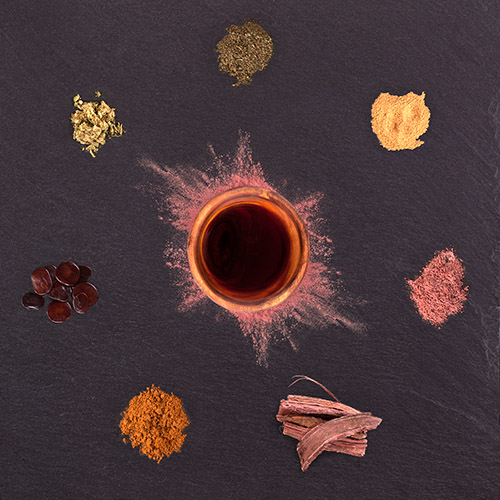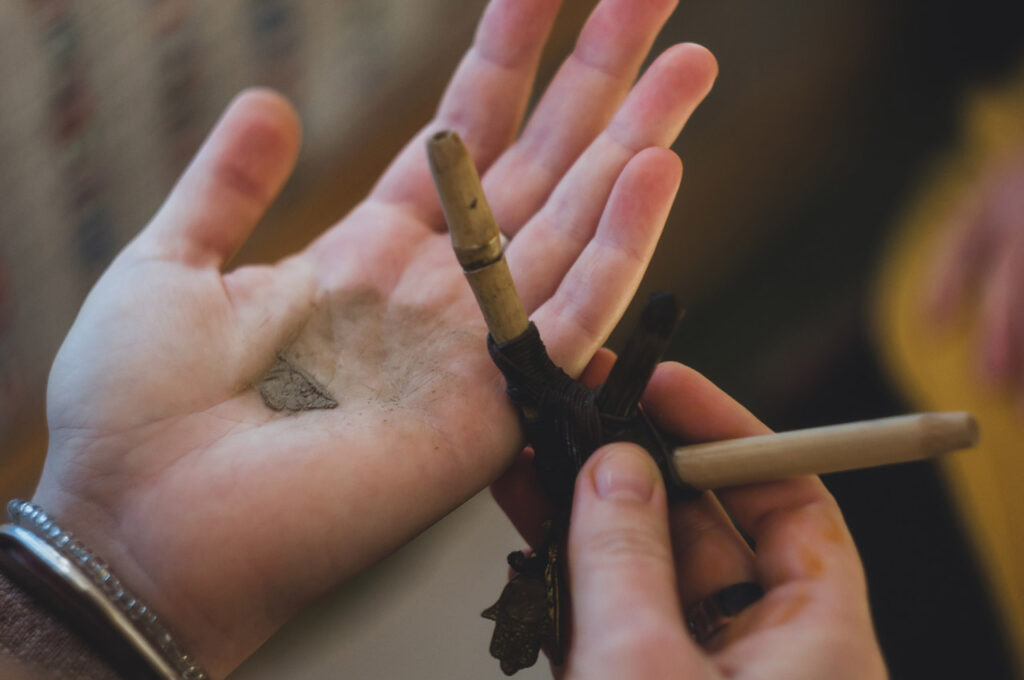Sacred Medicine from the Amazon: Hape’
Hapé, also known as rapé, is a sacred and traditional snuff preparation made from a blend of powdered medicinal plants, herbs, and tobacco, used by indigenous tribes in the Amazon rainforest for ceremonial and healing purposes. Despite its association with tobacco, hapé is distinct from commercial tobacco products and carries profound cultural and spiritual significance within indigenous communities.
The preparation and administration of hapé are deeply rooted in indigenous traditions and rituals, often overseen by shamans or healers who possess specialized knowledge of the plants and their therapeutic properties. Hapé ceremonies typically involve communal gatherings where participants partake in the snuff through a special blowpipe or by having it blown into their nostrils by a shaman. This ritualistic consumption is believed to facilitate spiritual connection, cleansing, and healing on physical, emotional, and energetic levels.
The Ingredients
The ingredients used in hapé vary among different indigenous tribes and may include a wide range of botanicals such as mapacho (Nicotiana rustica), a potent variety of tobacco native to the Amazon, as well as medicinal plants like chacruna (Psychotria viridis), cacao (Theobroma cacao), and various aromatic herbs. Each plant contributes its unique properties to the blend, resulting in diverse effects and experiences for the participants.
Contrary to commercial tobacco products, which are often associated with addiction and adverse health effects, hapé is revered for its therapeutic and ceremonial qualities. Indigenous cultures view hapé as a sacred medicine that promotes physical purification, mental clarity, emotional balance, and spiritual insight. When used with reverence and intention, hapé is believed to facilitate healing on both individual and collective levels, fostering a deeper connection with nature, community, and the spiritual realm.

From a pharmacological perspective, the effects of hapé are attributed to the bioactive compounds present in the botanical ingredients, including alkaloids, flavonoids, and terpenes. These compounds exert a range of physiological effects, such as stimulating the central nervous system, enhancing cognitive function, and inducing altered states of consciousness. Additionally, the ritualistic aspect of hapé ceremonies, combined with the supportive community context, can contribute to the overall therapeutic experience and outcomes.
While hapé holds immense cultural significance and is deeply ingrained in indigenous traditions, its use has garnered interest and adoption beyond indigenous communities, with individuals from diverse backgrounds seeking out its healing properties and spiritual benefits. However, it’s essential to approach hapé with respect, humility, and mindfulness, honoring its origins and the wisdom of the indigenous cultures from which it emanates. By doing so, hapé can serve as a powerful tool for personal transformation, healing, and spiritual growth, fostering greater harmony and interconnectedness with the natural world.

